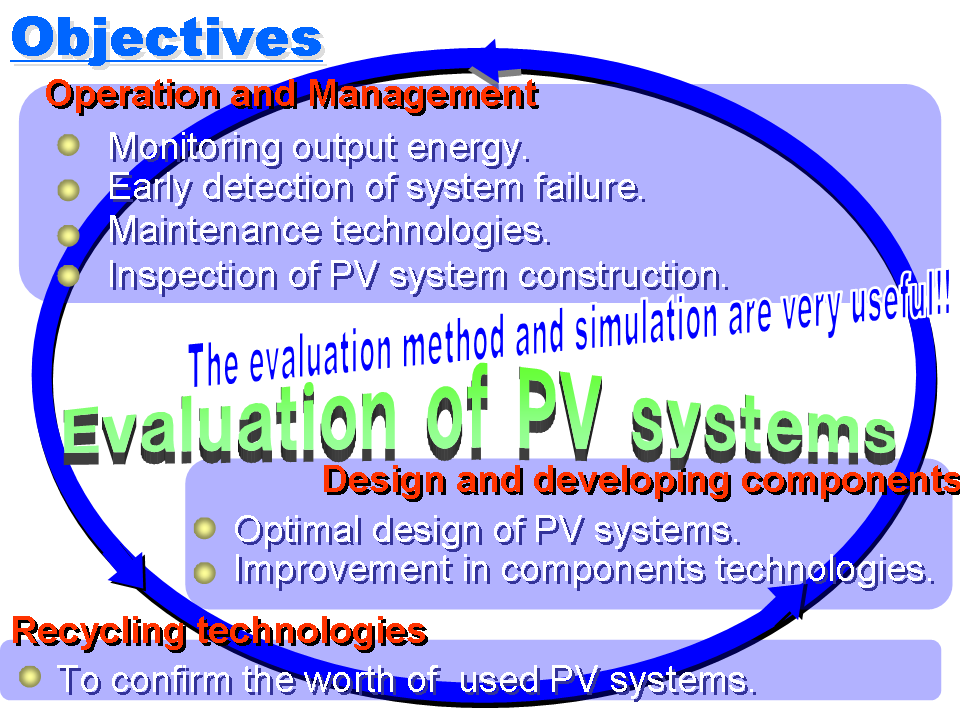publications
| Evaluation
and simulation team |
|
|
In Japan, new energy sub committee under
Agency for Natural Resources and Energy, Ministry of Economy Trade
and Industry (METI), formulated the goal to be established the total
of photovoltaic systems - 48,200,000 kWp in 2010. Consequently,
photovoltaic systems intend to be a main generation of renewable
energy, and a large number of PV systems installed in Japan has
been the top of the world. Technologies of the PV system, in contract,
are considered to be still scant and are deemed necessary to improve
more in tandem with penetration of PV. Especially technologies for
reliability of operation seem to be the most important because somewhat
troubles or effect have been informed from existing PV systems such
as a system rate issue, maintenances, and system failures. Even
though they are known as the maintenance free generation, PV systems
have to be monitored and evaluated their output energy since certain
troubles have been reported that PV systems could not generate energy
as much as they are expected; for instance, effect shading around
buildings and trees, problem the failure of system rating, the repression
of output energy by over voltage control, and the failure of construction,
and so on. Moreover, the output energy is more important than PV
system rate if environmental issue is focused. As of now, output
energy from PV systems is not clear due to that it is difficult
to characterize actual performance of PV systems. As a result, an
evaluation method for PV systems seems to be necessary because evaluations
is useful and helpful for the management of PV systems operation
as well as output energy.
Therefere, we have taken two approch to development such as evaluation
methods and simulations. In addition, to develop the simulation,
estimation of shading effect is very important study. our research
include the shading by several approach. Simulation are grid connected
system mainly, and it should be noted that grid connected PV system
with battery. Moreover, we have studied the characteristics of areally
distributed PV systems such as smoothing effect.
|


|
| The Sophisticated
Verification method |
|
|
|
The SV method has been developed as an evaluation method, which
is using monitored data. During converting input energy into output
energy, the PV system has numerous kinds of losses, which seem not
to be measured. The SV method, however, can estimate system losses
from irradiation energy (optical energy) to system electricity output
power (AC power). Evaluating needs typical four monitored data such
as in-plane irradiation data, cell junction temperature - which
can be estimable from ambient temperature, array output power, and
system output power, so that the system losses are allocated the
part of the total system loss. For the latest version of the SV
method, classifiable characteristics of PV systems are eight factors:
shading losses, optical losses, losses by load mismatching, temperature
effect on module efficiency, power conditioner standby losses, power
conditioner efficiency, DC circuit losses, and the other losses
which reduce the fundamental system performance, for instance; soil
on modules, depleted modules, and the erroneous system rate.
|
|
| An Array shading evaluation
by using photogrammetry |
|
| |
|
| A Grid connected Photovoltaic
system with battery |
|
| |
|
| A PV system integrated
evaluation software |
|
| |
|
| Characteristics
of areally distributed PV systems |
|
| |
|
|

